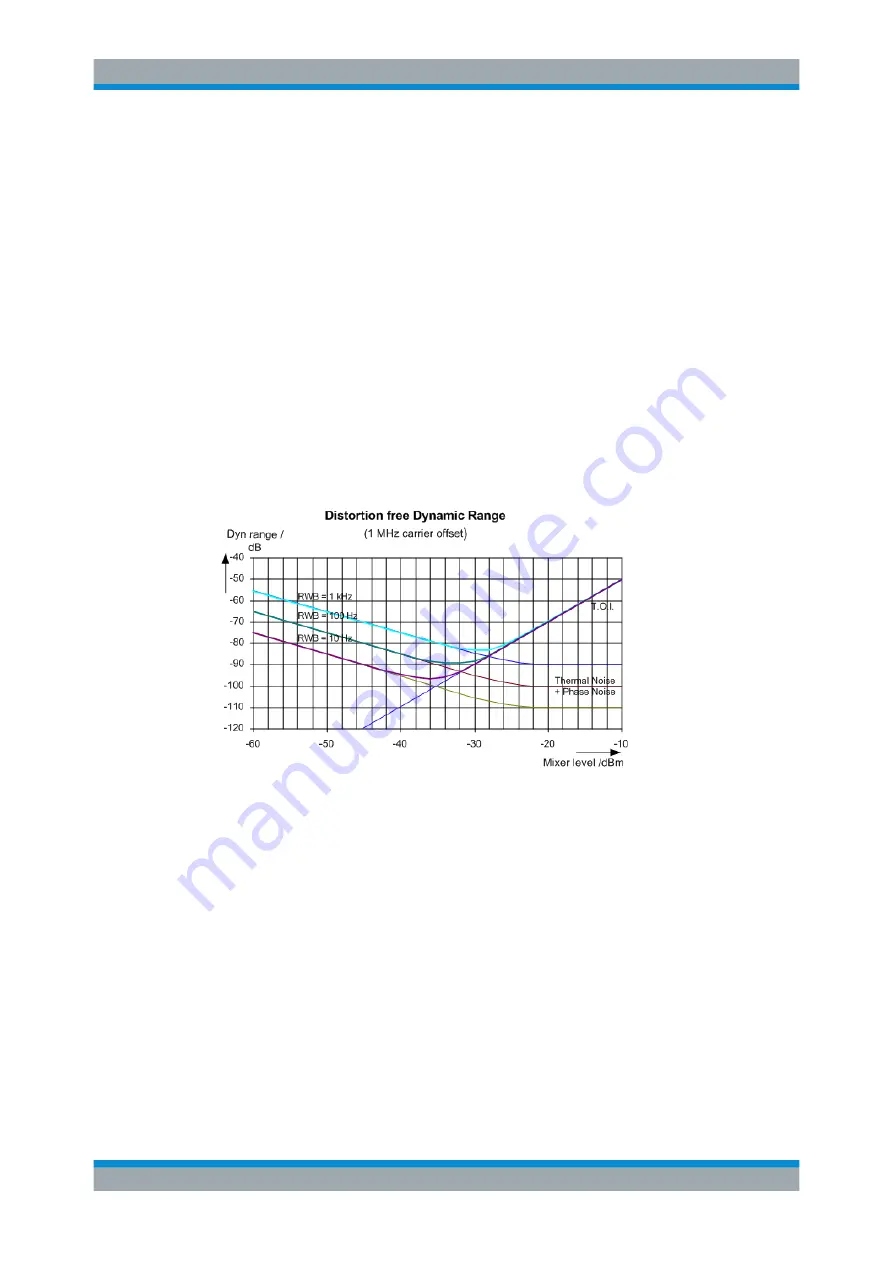
Measurements and Results
R&S
®
FSVA3000/ R&S
®
FSV3000
295
User Manual 1178.8520.02 ─ 01
Intermodulation-free dynamic range
The "Intermodulation-free dynamic range", i.e. the level range in which no internal
intermodulation products are generated if two-tone signals are measured, is deter-
mined by the third order intercept point, the phase noise and the thermal noise of the
signal analyzer. At high signal levels, the range is determined by intermodulation prod-
ucts. At low signal levels, intermodulation products disappear below the noise floor, i.e.
the noise floor and the phase noise of the signal analyzer determine the range. The
noise floor and the phase noise depend on the resolution bandwidth that has been
selected. At the smallest resolution bandwidth, the noise floor and phase noise are at a
minimum and so the maximum range is obtained. However, a large increase in sweep
time is required for small resolution bandwidths. It is therefore best to select the largest
resolution bandwidth possible to obtain the range that is required. Since phase noise
decreases as the carrier-offset increases, its influence decreases with increasing fre-
quency offset from the useful signals.
The following diagrams illustrate the intermodulation-free dynamic range as a function
of the selected bandwidth and of the level at the input mixer (= signal level – set RF
attenuation) at different useful signal offsets.
Figure 7-47: Intermodulation-free range as a function of level at the input mixer and the set resolution
bandwidth
(Useful signal offset = 1 MHz, DANL = -145 dBm/Hz, TOI = 15 dBm; typical values at 2
GHz)
The optimum mixer level, i.e. the level at which the intermodulation distance is at its
maximum, depends on the bandwidth. At a resolution bandwidth of 10 Hz, it is approx.
-35 dBm and at 1 kHz increases to approx. -30 dBm.
Phase noise has a considerable influence on the intermodulation-free range at carrier
offsets between 10 and 100 kHz ( see
). At greater bandwidths, the influ-
ence of the phase noise is greater than it would be with small bandwidths. The opti-
mum mixer level at the bandwidths under consideration becomes almost independent
of bandwidth and is approx. -40 dBm.
Third Order Intercept (TOI) Measurement
















































